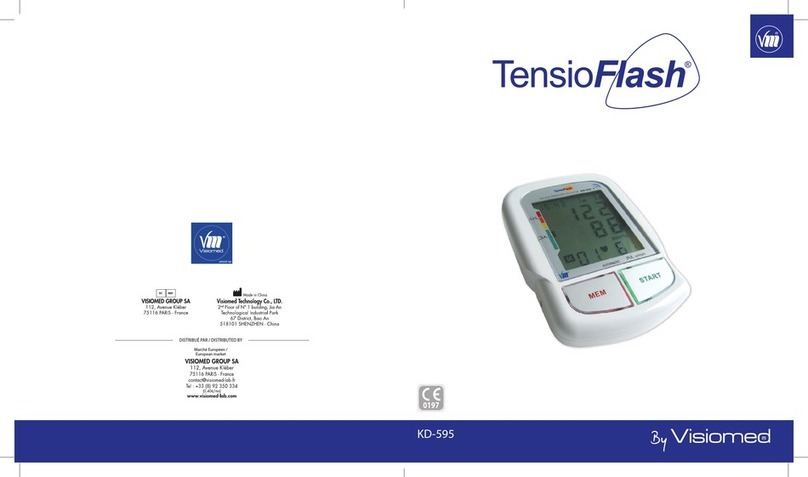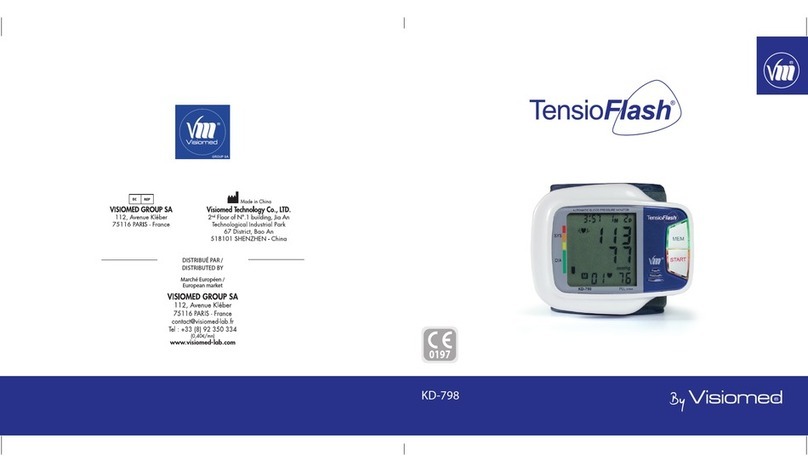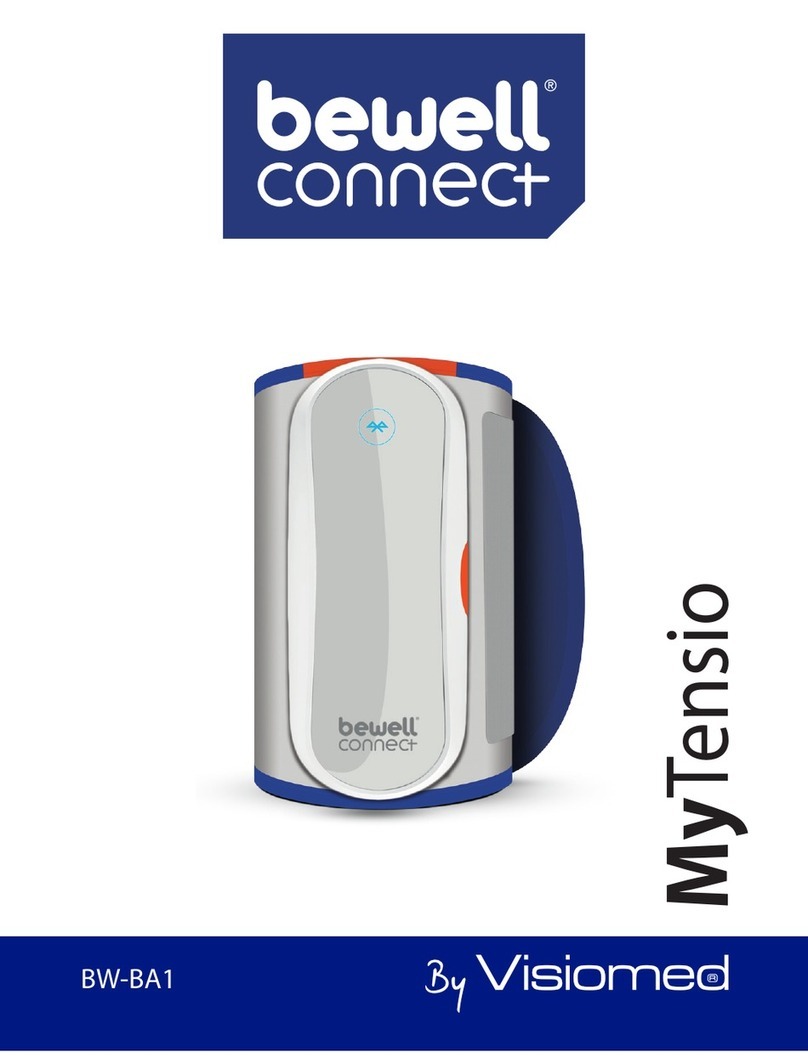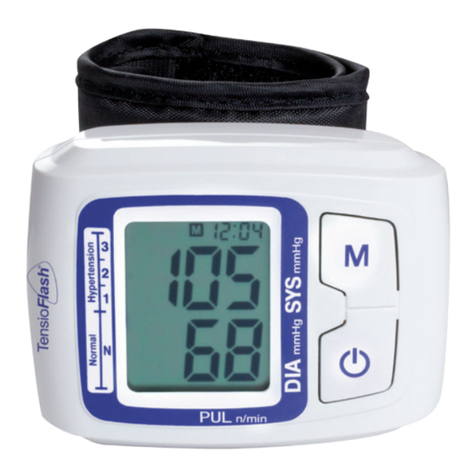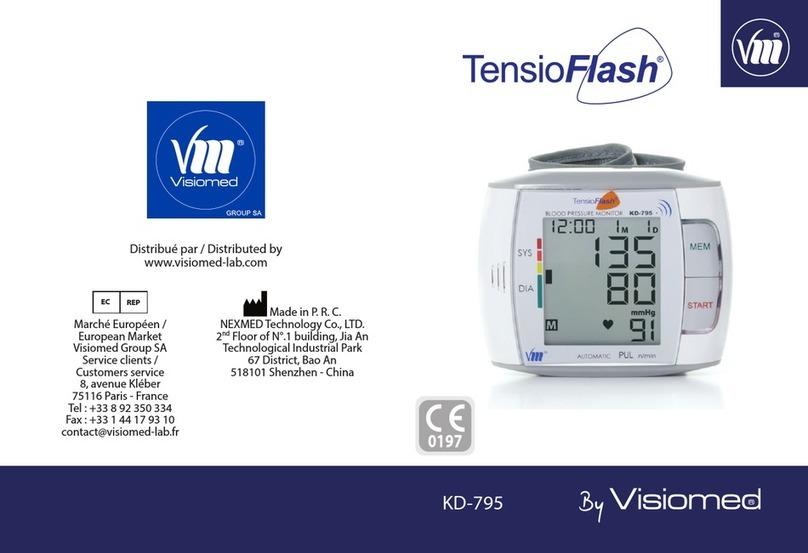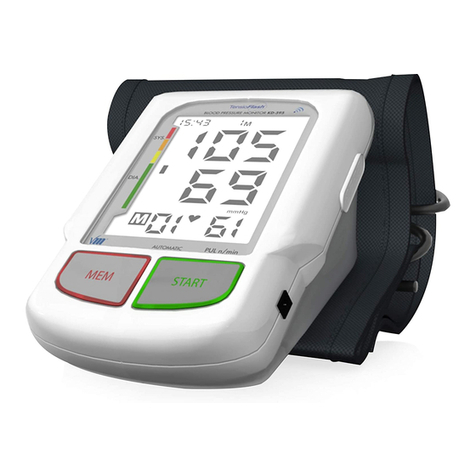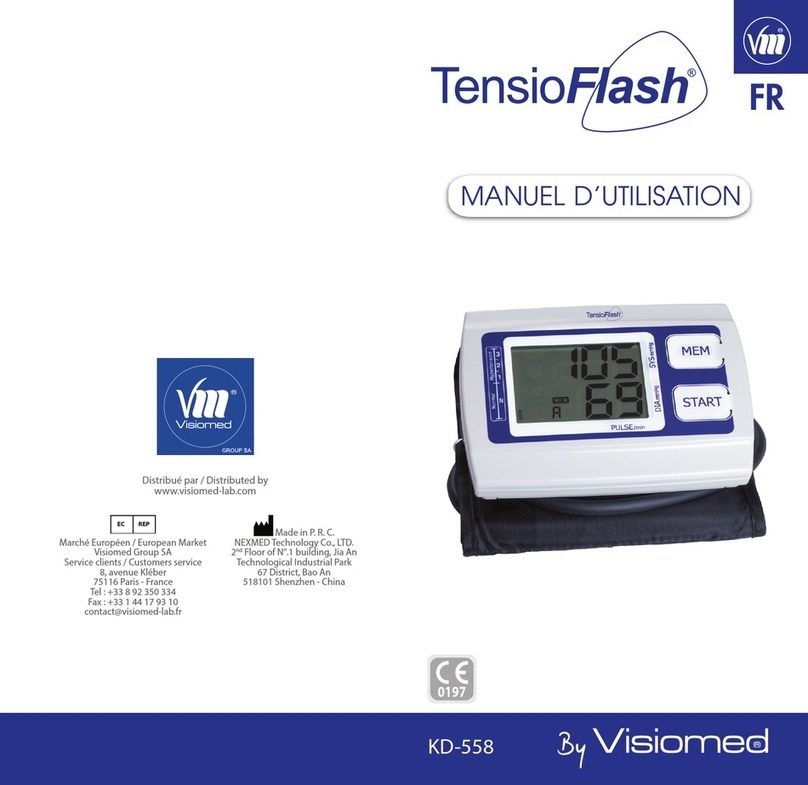
BewellConnect - BW-OX1 - User Manual - 072017v2 BewellConnect - BW-OX1 - User Manual - 072017v26 7
Conforme aux normes européennes et à la section 15 des règles de la FCC.
SOMMAIRE
Découvrez comment installer et utiliser l’application BewellConnect® en visitant notre site
bewell-connect.fr/application-bewellconnect
Le fabricant se réserve le droit de modifier les caractéristiques techniques
du produit sans préavis.
Par la présente, Visiomed déclare que l’équipement radioélectrique du type MyOxy est
conforme à la directive 2014/53/UE. Le texte complet de la déclaration UE de conformité est
disponible à l’adresse internet suivante :
https://bewell-connect.com/conformite-des-produits/
Cher/chère client(e),
Vous venez d’acquérir MyOxy, l’oxymètre de pouls digital de la gamme BewellConnect. Afin de
l’utiliser de manière optimale et efficace, nous vous recommandons de lire attentivement cette
notice d’utilisation
1. AVERTISSEMENTS
- Utiliser cet appareil uniquement pour l’usage auquel il est destiné tel que décrit dans cette
notice.
- Ce dispositif est adapté pour des contrôles ponctuels dans les structures hospitalières.
- Utiliser cet appareil dans une plage de température comprise entre 5°C et 40°C / 41°F et 104°F.
- Ne pas exposer cet appareil à des conditions extrêmes de température (> 70°C / 158°F ou <
-25°C / -13°F).
- Ne pas utiliser cet appareil dans un environnement dont l’humidité relative est supérieure à 93 %.
- Cet appareil doit toujours être conservé dans un endroit propre et sec.
- Ne pas exposer à la lumière directe du soleil et ne pas mettre en contact avec de l’eau.
- Ne pas faire subir de chocs électriques.
- Ne jamais faire tomber cet appareil.
- Suivre les consignes d’entretien indiquées dans ce mode d’emploi.
- Ne jamais tenter d’ouvrir l’appareil. En cas de problème, contactez votre service après-vente.
- Tenir hors de portée des enfants.
- Les résultats de mesure sont donnés à titre indicatif. En cas de doute concernant vos résultats,
veuillez contacter votre médecin.
- Cesser d’utiliser l’appareil en cas d’anomalie ou de dysfonctionnement.
- Cet appareil n’a pas été conçu pour être utilisé par des personnes (y compris les enfants)
dont les capacités physiques, sensorielles ou mentales sont réduites, ni par des personnes ne
possédant pas l’expérience ou les connaissances requises, sauf si elles sont assistées par une
personne responsable de leur sécurité et d’assurer leur surveillance, ou si elles ont bénéficié
d’instructions préalables concernant l’utilisation de l’appareil.
2. PRÉCAUTIONS AVANT UTILISATION
- Ne pas utiliser cet appareil à proximité d’une unité d’électrochirurgie (ESU), car cela pourrait
perturber son fonctionnement.
- Positionner l’oxymètre de manière à permettre une captation correcte du pouls, l’objectif pre-
mier étant de déterminer, de façon fiable, une valeur de saturation pulsée en oxygène (SpO2)
Vérifiez que rien n’interfère la mesure.
1. AVERTISSEMENTS........................................................................................................ 7
2. PRÉCAUTIONS AVANT UTILISATION ........................................................................ 7
3. INFORMATIONS ........................................................................................................... 8
3.1. LA SATURATION EN OXYGÈNE SPO2.................................................................... 8
3.2. LE POULS.................................................................................................................... 10
4. CARACTÉRISTIQUES .................................................................................................... 10
5. UTILISER L’OXYMÈTRE................................................................................................ 10
5.1. DESCRIPTION ............................................................................................................ 10
5.2. SUGGESTIONS AVANT MESURE.............................................................................. 11
5.3. TÉLÉCHARGER L’APPLICATION............................................................................... 11
5.4. MODALITÉ DE PRISE................................................................................................. 11
6. NETTOYAGE ET ENTRETIEN........................................................................................ 11
7. CARACTÉRISTIQUES TECHNIQUES ............................................................................ 12
8. GUIDE DE DÉPANNAGE............................................................................................... 13
